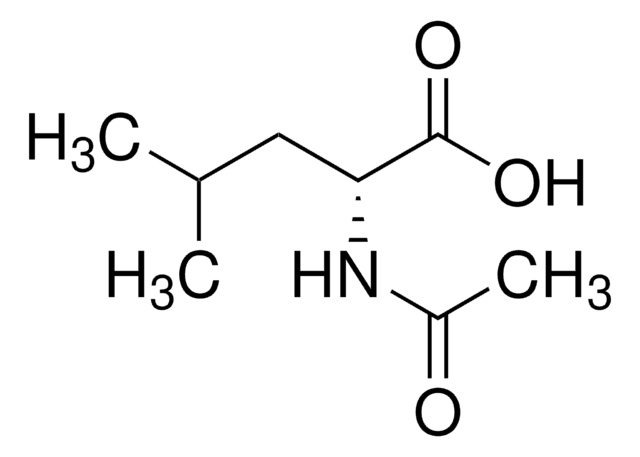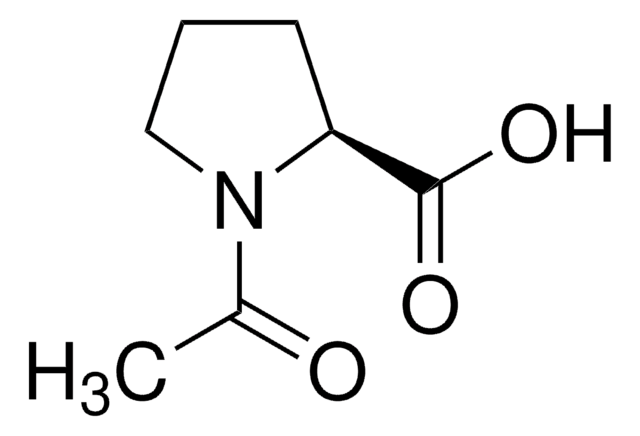This product may be stored at room temperature. The stability of this compound in solution has not been determined. However various external sources state that this product may be stored in aliquots at -80°C for 2 years and -20°C, for 1 year. This information has not been validated.
441511
N-Acetyl-L-leucine
99%, for peptide synthesis, ReagentPlus®
Sinonimo/i:
N-Acetyl-L-(-)-leucine, Acetylleucine
Scegli un formato
Scegli un formato
About This Item
Prodotti consigliati
Nome del prodotto
N-Acetyl-L-leucine, ReagentPlus®, 99%
Livello qualitativo
Nome Commerciale
ReagentPlus®
Saggio
99%
Stato
solid
Attività ottica
[α]25/D −23±3°, c = 2 in ethanol
Impiego in reazioni chimiche
reaction type: C-H Activation
reaction type: solution phase peptide synthesis
reagent type: catalyst
reaction type: Peptide Synthesis
Punto di fusione
187-190 °C (lit.)
applicazioni
peptide synthesis
Gruppo funzionale
amine
carboxylic acid
Stringa SMILE
CC(C)C[C@H](NC(C)=O)C(O)=O
InChI
1S/C8H15NO3/c1-5(2)4-7(8(11)12)9-6(3)10/h5,7H,4H2,1-3H3,(H,9,10)(H,11,12)/t7-/m0/s1
WXNXCEHXYPACJF-ZETCQYMHSA-N
Cerchi prodotti simili? Visita Guida al confronto tra prodotti
Note legali
Codice della classe di stoccaggio
11 - Combustible Solids
Classe di pericolosità dell'acqua (WGK)
WGK 3
Punto d’infiammabilità (°F)
Not applicable
Punto d’infiammabilità (°C)
Not applicable
Scegli una delle versioni più recenti:
Possiedi già questo prodotto?
I documenti relativi ai prodotti acquistati recentemente sono disponibili nell’Archivio dei documenti.
I clienti hanno visto anche
-
Storage temperature? Storage temperature when already diluted?
1 risposta-
Utile?
-
Filtri attivi
Il team dei nostri ricercatori vanta grande esperienza in tutte le aree della ricerca quali Life Science, scienza dei materiali, sintesi chimica, cromatografia, discipline analitiche, ecc..
Contatta l'Assistenza Tecnica.











